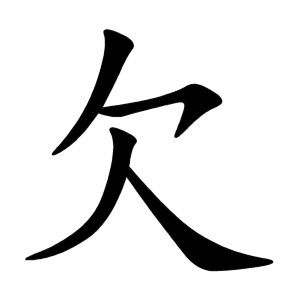欠
- yawn;
- deficiency;
It signifies actions or states such as "yawning," "lacking," or "being insufficient."
Etymology
Characters with 欠
6 strokes
11 strokes
12 strokes
14 strokes
22 strokes
欠
하품
흠
hapum
heum
Kangxi radical:76
Strokes:4
Unicode:U+6B20
Cangjie input:
- 弓人 (NO)
Composition:
- ⿱ ⺈ 人
